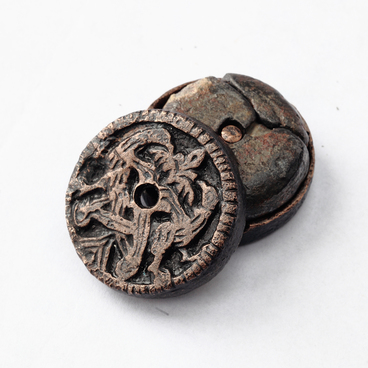In the old days, hunting provided people not only with meat, but also with fur. It was important for sewing various types of clothing, and trade between tribes and countries. The animals were caught in different ways. Some traps killed animals, while others were used to capture alive. There were also devices of the pressing type. They were used not only in Siberia but also in the Far East. After the animal grabbed the bait or touched the trigger, a heavy object fell on it. A heavy log was used for this, and for smaller animals, there was used a sill plate or even a shutter.
As in our day, the primitive hunters used traps. Over the centuries, their design has not changed. The paw or neck of the animal was securely fixed by arcs that were triggered when the plate was pressed. It was designed so, that the victim could not independently escape from the trap. Sometimes a rope or chain was attached to the trap to make it easier to hold the caught animal, especially if it was large enough. Traps were installed for bears and deer. Some ethnic groups valued deer fur and antlers, which were used for sewing clothes and making various crafts.
During excavations, archaeologists found many variants of devices that were used in hunting fur-bearing animals.
The klyapets (in different nations it is called the klepets, the klyaptsa) is a spring trap for the animal. It was used in the northern regions of the European part of Russia and Siberia. Most often it was installed for small animals: hares, lynxes, wolves. Sometimes there were special mechanisms for hunting deer.
The main element of the klyapets was a quadrangular metal rod with two pointed spikes at the end. Its standard length is 24 centimeters. It was mounted on a wooden platform — a lever. The mechanism was driven by a twisted rope. The klyapets was installed on the main animal path. Through the path itself, a string was stretched, which was called a simka. The animal clung to the simka with its chest, the rope mechanism was launched, the lever was triggered and after that, the tip of the klyapets hit the victim.
As in our day, the primitive hunters used traps. Over the centuries, their design has not changed. The paw or neck of the animal was securely fixed by arcs that were triggered when the plate was pressed. It was designed so, that the victim could not independently escape from the trap. Sometimes a rope or chain was attached to the trap to make it easier to hold the caught animal, especially if it was large enough. Traps were installed for bears and deer. Some ethnic groups valued deer fur and antlers, which were used for sewing clothes and making various crafts.
During excavations, archaeologists found many variants of devices that were used in hunting fur-bearing animals.
The klyapets (in different nations it is called the klepets, the klyaptsa) is a spring trap for the animal. It was used in the northern regions of the European part of Russia and Siberia. Most often it was installed for small animals: hares, lynxes, wolves. Sometimes there were special mechanisms for hunting deer.
The main element of the klyapets was a quadrangular metal rod with two pointed spikes at the end. Its standard length is 24 centimeters. It was mounted on a wooden platform — a lever. The mechanism was driven by a twisted rope. The klyapets was installed on the main animal path. Through the path itself, a string was stretched, which was called a simka. The animal clung to the simka with its chest, the rope mechanism was launched, the lever was triggered and after that, the tip of the klyapets hit the victim.



